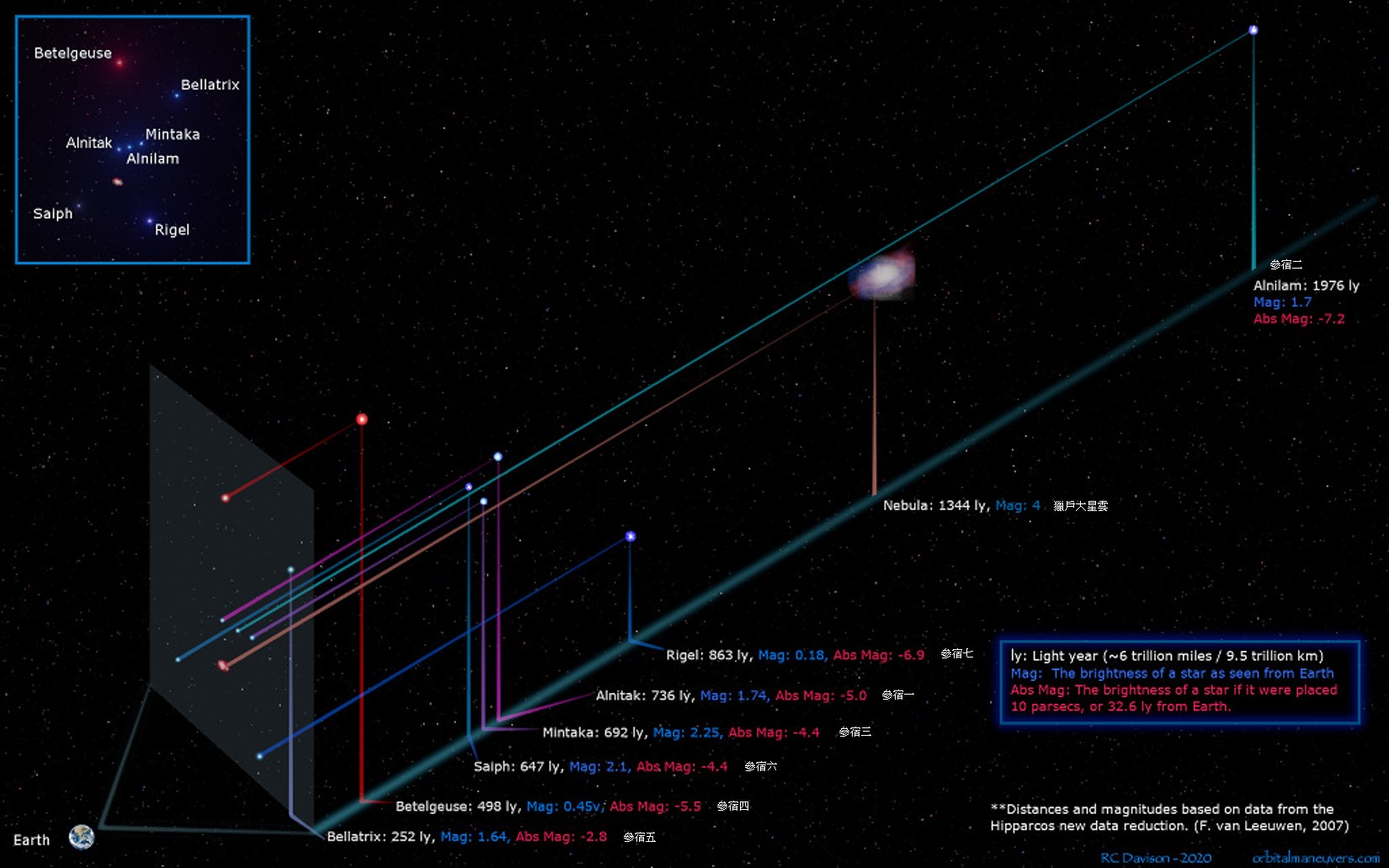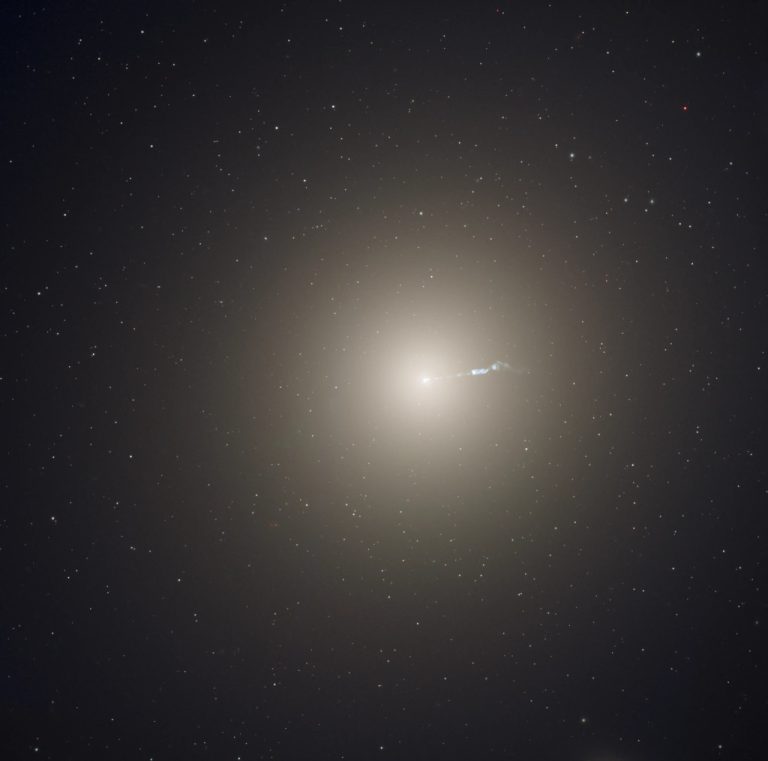2020年9月19日
Orion in Depth
Illustration Credit & Copyright: Ronald Davison
Explanation: Orion is a familiar constellation. The apparent positions of its stars in two dimensions create a well-known pattern on the bowl of planet Earth’s night sky. Orion may not look quite so familiar in this 3D view though. The illustration reconstructs the relative positions of Orion’s bright stars, including data from the Hipparcus catalog of parallax distances. The most distant star shown is Alnilam. The middle one in the projected line of three that make up Orion’s belt when viewed from planet Earth, Alnilam is nearly 2,000 light-years away, almost 3 times as far as fellow belt stars Alnitak and Mintaka. Though Rigel and Betelgeuse apparently shine brighter in planet Earth’s sky, that makes more distant Alnilam intrinsically (in absolute magnitude) the brightest of the familiar stars in Orion. In the Hipparcus catalog, errors in measured parallaxes for Orion’s stars can translate in to distance errors of a 100 light-years or so.
Tomorrow’s picture: breaking distant light
猎户座的深度
图示提供与版权: Ronald Davison
说明: 猎户座是我们很熟悉的星座。它的成员星在二维面的位置分布,造就了猎户座在碗形的地球夜空中之标志性图形。不过,在这幅三维图示里,猎户座看来不再熟悉。这张图示使用伊氏星表的视差距离数据,来重建猎户座亮星的相对位置。其中,最遥远的是星宿二。从地球看出去,它是猎户腰带三星中间的那颗,而将近2,000光年远的星宿二,比另二颗腰带星参宿一和参宿三要远将近3倍。在地球的夜空中,虽然参宿七和参宿四视觉上较亮,但较远的参宿二,是构成猎户座图案的众星中,真实亮度(绝对星等)的王者。在伊氏星表里,猎户座众星的视差量测误差,如果换算成距离为100光年左右。 (Hipparcus catalog 伊氏星表)
明日的图片: breaking distant light







